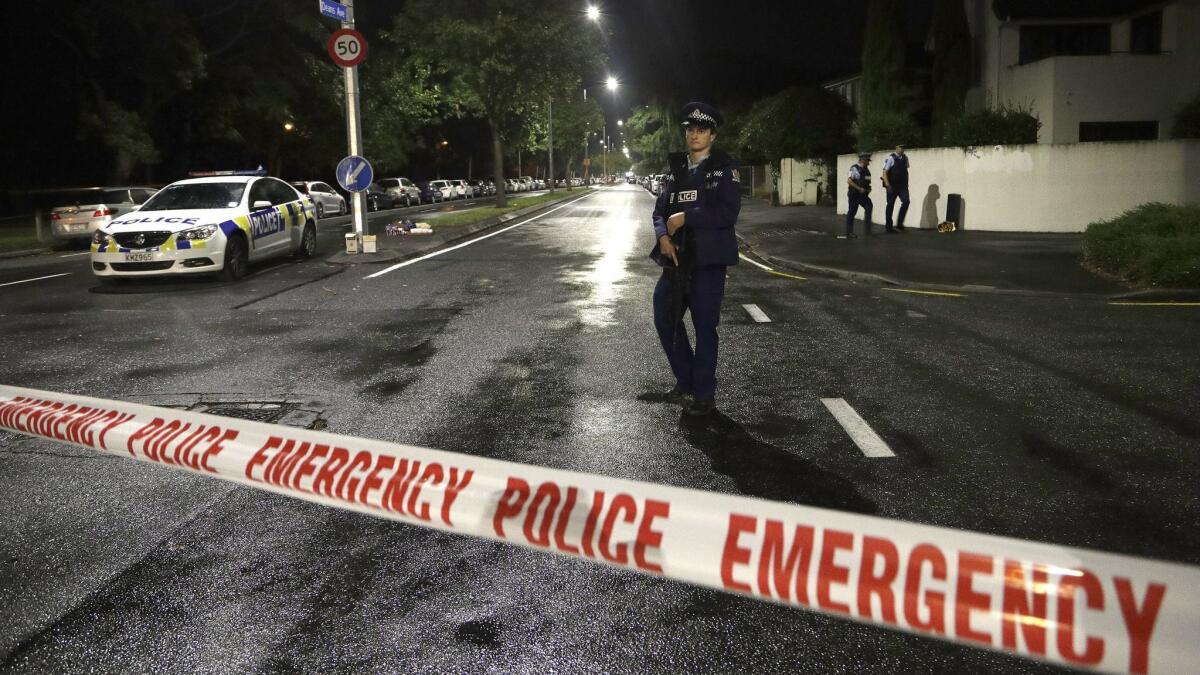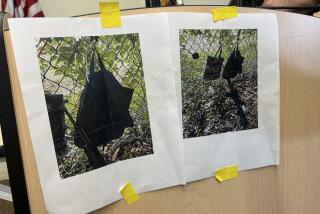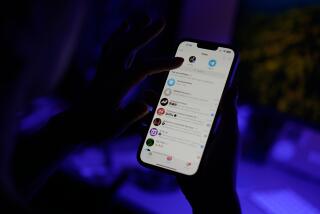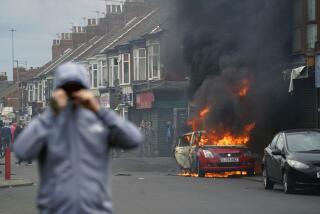Editorial: Extremism knows no borders as white supremacy violently rears its head in New Zealand

There are more questions than answers at the moment after the horrific massacre of 49 people during Friday prayers at two New Zealand mosques, allegedly by a self-described “ethno-nationalist” who methodically planned the attacks, posted a 74-page manifesto online, purportedly explaining his motives, and then livestreamed himself as he mowed down the innocent.
We will, of course, be told that this was the work of a madman and, perhaps, some equally deranged accomplices — police are questioning three other people. That may well be. But, at heart, it appears to be the work of a violent white supremacist who had acquired combat-style weapons and who was driven, according to his manifesto, to kill nonwhites in New Zealand to show that “there was no where left to go that was safe and free from mass immigration.” And he chose to use firearms “for the affect it would have on social discourse, the extra media coverage they would provide and the effect it could have on the politics of United States and thereby the political situation of the world.”
The sick irony is the alleged Australian-born anti-immigrant killer was an immigrant himself to New Zealand, though he didn’t see it that way. He saw himself acting in defense of a shared European-derived culture that is not defined by a passport. And he saw Muslim immigrants as an attack on that culture.
The sick irony is the alleged Australian-born anti-immigrant killer was an immigrant himself to New Zealand.
A lot will be made of the fact that the suspected 28-year-old gunman, who identified himself as Brenton Tarrant, cited President Trump in his manifesto “as a symbol of renewed white identity and common purpose,” even though he goes on to say he opposes Trump “as a policy maker and leader.” More relevant is the manifesto’s nod to the Norwegian anti-immigrant extremist Anders Breivik, who killed 77 people in a 2011 bombing and firearms attack.
What we’re seeing in the New Zealand attacks is yet another atrocity committed in the name of white supremacy. Of course, such racism is not new in the world, as our own history attests. Hitler immolated most of Europe and North Africa in hopes of building an Aryan empire, and in the modern era, the U.S. suffers more terror attacks by home-grown white supremacists than from foreign actors. It is a scourge, and we pay it too little heed. Dylann Roof killed nine African Americans in a church to foment a race war. Robert Bowers killed 11 worshippers in a synagogue because “all these Jews need to die.” Gregory Bush killed two African Americans as they shopped but told a white shopper he spared that “whites don’t kill whites.” And on it goes while Trump falsely singles out Muslims and Central American immigrants as existential threats.
We would hope that outrage over such acts would be universal, but, once again, we hope for too much. The support for the killings on fever swamps like Gab.com show that even a racist murderer has an audience in a social media age in which anyone with a camera and a login can become a broadcaster. According to the purported manifesto, the point of the killings was to send a global message to Muslims “to directly reduce immigration rates to European lands by intimidating and physically removing the invaders themselves.” The alleged gunman also sought to provoke partisans on both sides, “to create an atmosphere of fear and change in which drastic, powerful and revolutionary action can occur.” Doing so requires a way to convey that message, and that’s why the first 17 minutes of the attacks were streamed, live, on Facebook.
Enter the Fray: First takes on the news of the minute »
The shooter might have carried out his mayhem even if there were no giant social media networks available to broadcast it around the globe. But there are, and while Facebook quickly removed the video and terminated the alleged killer’s account, the video spread rapidly on YouTube and Twitter despite those companies’ efforts to keep it off their networks. That’s a problem inherent in a platform that makes content posted by users available for sharing, instantaneously and without filters, around this modern media world. The manifesto, meanwhile, remains available on multiple sites.
But the impulse behind the acts isn’t new, and the persistence of violent expressions of racism and religious intolerance in the 21st century undercuts any pretense that the world has advanced beyond such medieval notions. Few impulses are more primitive than wanting to kill other people just because they are different. And yes, Muslim extremists perpetrate horrific crimes. Christian extremists perpetrate horrific crimes. So do extremist Hindus and Buddhists. The commonality among them all is that one word: extremism. And in New Zealand today, 49 more people lay dead, the freshest victims of an old curse.
Follow the Opinion section on Twitter @latimesopinion or Facebook
More to Read
A cure for the common opinion
Get thought-provoking perspectives with our weekly newsletter.
You may occasionally receive promotional content from the Los Angeles Times.










